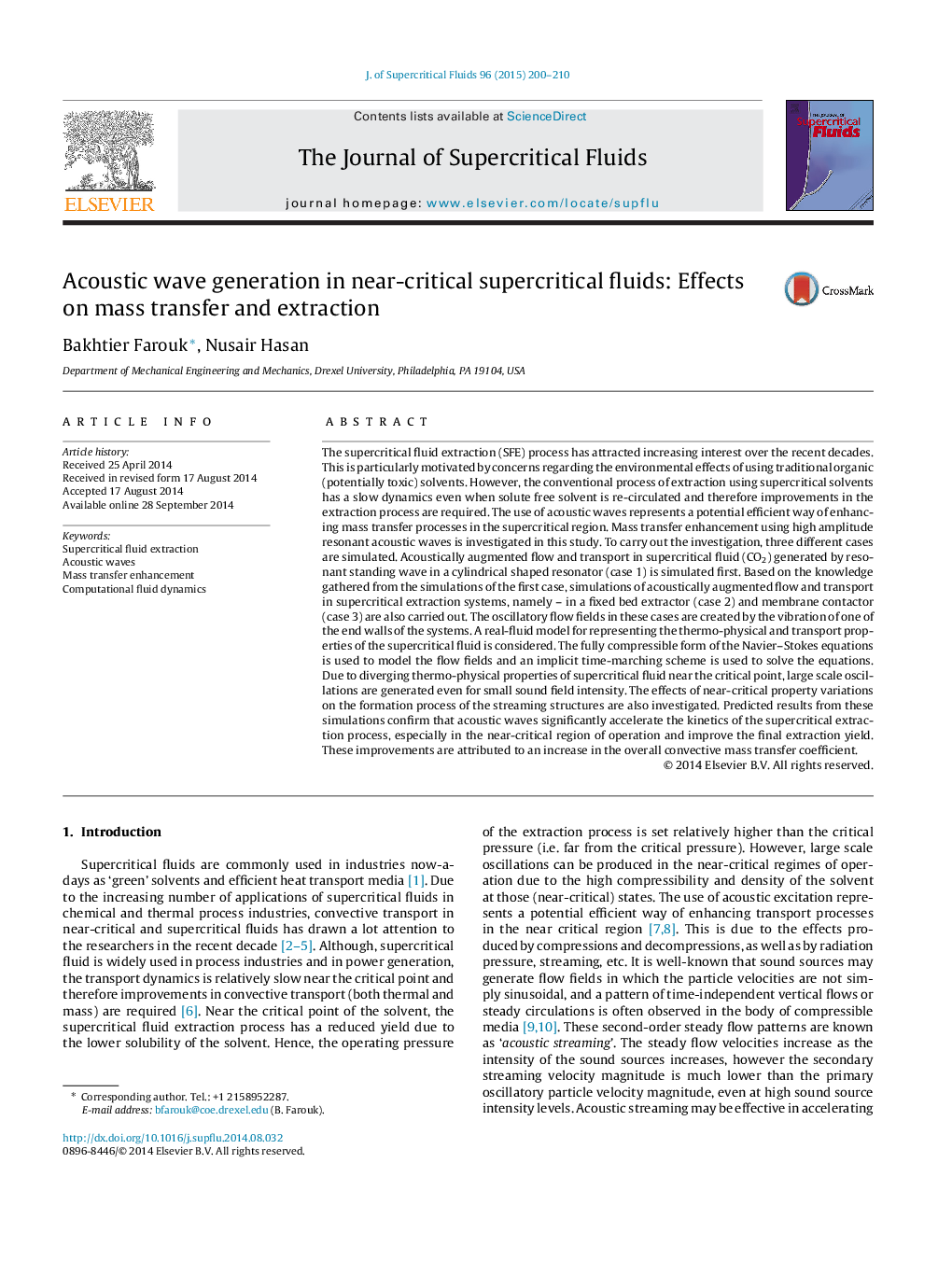| Article ID | Journal | Published Year | Pages | File Type |
|---|---|---|---|---|
| 230455 | The Journal of Supercritical Fluids | 2015 | 11 Pages |
•Acoustic steaming in near-critical supercritical CO2 due to acoustic excitations is investigated numerically.•Formation of the streaming structures and the streaming velocities are found to be strongly dependent on the pseudo-critical states of the fluid.•The extraction of caffeine from coffee beans and the recovery of ethanol using supercritical CO2 flow are investigated.•Acoustic excitations significantly accelerate the kinetics of the supercritical extraction process in both cases.•The enhancement in extraction yield is due to the cumulative effect of increased localized convection and formation of streaming structures.
The supercritical fluid extraction (SFE) process has attracted increasing interest over the recent decades. This is particularly motivated by concerns regarding the environmental effects of using traditional organic (potentially toxic) solvents. However, the conventional process of extraction using supercritical solvents has a slow dynamics even when solute free solvent is re-circulated and therefore improvements in the extraction process are required. The use of acoustic waves represents a potential efficient way of enhancing mass transfer processes in the supercritical region. Mass transfer enhancement using high amplitude resonant acoustic waves is investigated in this study. To carry out the investigation, three different cases are simulated. Acoustically augmented flow and transport in supercritical fluid (CO2) generated by resonant standing wave in a cylindrical shaped resonator (case 1) is simulated first. Based on the knowledge gathered from the simulations of the first case, simulations of acoustically augmented flow and transport in supercritical extraction systems, namely – in a fixed bed extractor (case 2) and membrane contactor (case 3) are also carried out. The oscillatory flow fields in these cases are created by the vibration of one of the end walls of the systems. A real-fluid model for representing the thermo-physical and transport properties of the supercritical fluid is considered. The fully compressible form of the Navier–Stokes equations is used to model the flow fields and an implicit time-marching scheme is used to solve the equations. Due to diverging thermo-physical properties of supercritical fluid near the critical point, large scale oscillations are generated even for small sound field intensity. The effects of near-critical property variations on the formation process of the streaming structures are also investigated. Predicted results from these simulations confirm that acoustic waves significantly accelerate the kinetics of the supercritical extraction process, especially in the near-critical region of operation and improve the final extraction yield. These improvements are attributed to an increase in the overall convective mass transfer coefficient.
Graphical abstractFigure optionsDownload full-size imageDownload as PowerPoint slide
